Do-it-yourself duplicator slide
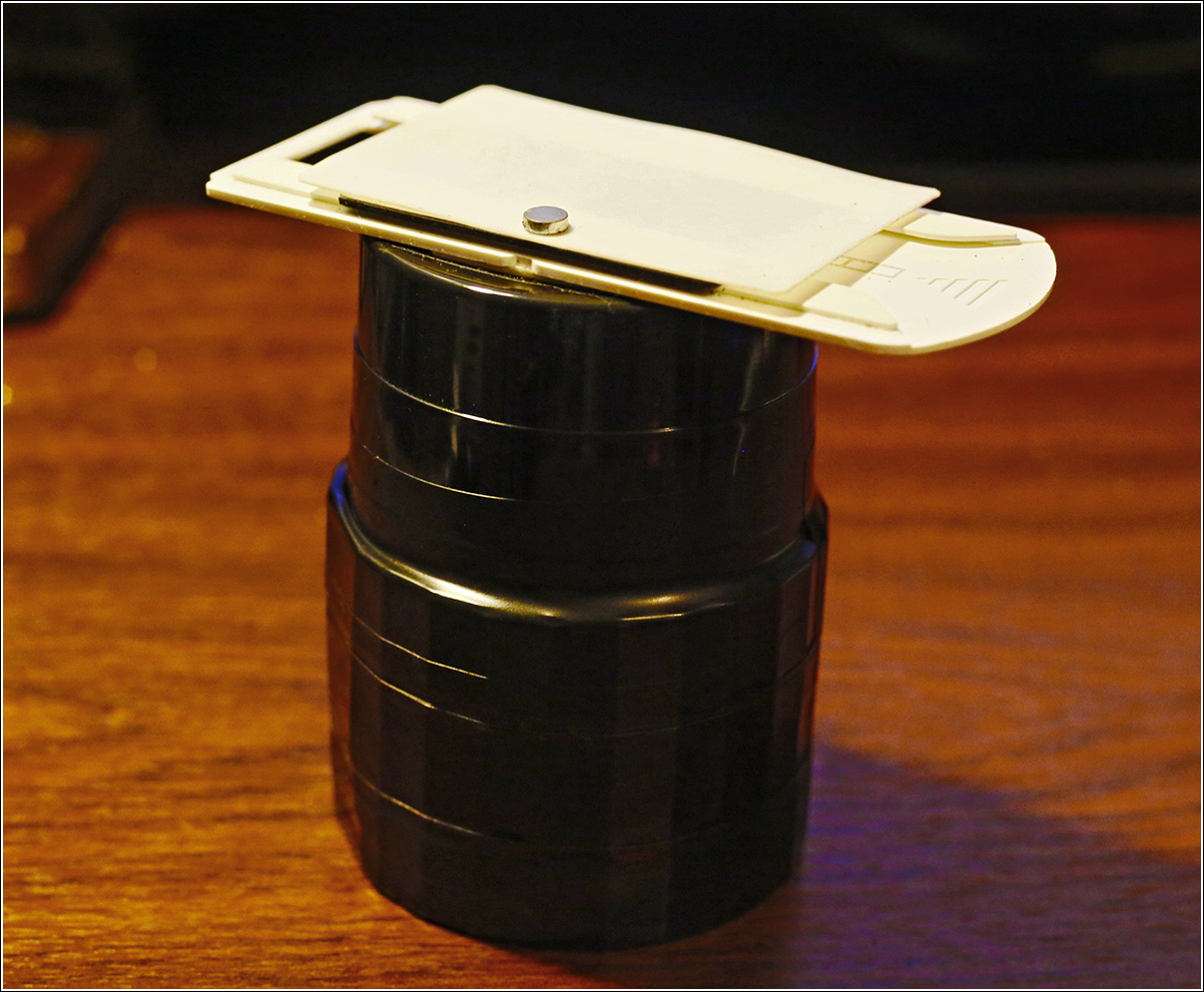
For re-filming of film negatives and positives, scanners and slide duplicators are used.
Like many born in the USSR, I have a box with old films and slides. For a long time I was going to retrain them by a digit, or rather I was going to make a device for re-filming for a long time, and finally I was going to.
For a start, made a search on an Internet. There were homemade and factory options. Some are unnecessarily complex, some are not very convenient for the manufacture and use ...
The collected information allowed to give birth to the construction of its own version.
For my option, you need some sort of "average" lens (30-70mm) and a macro-ring. I took a 50mm lens - 50/1. 8, and also found macro rings in the storeroom, with focus contacts that were not very expensive to buy on ibei.
The design itself was conceived as a kind of tube, which on one side had a sled for pulling the film or setting up slides, and the other side was to put it on the lens.
')
There was no problem with the sled - I took an A4 scanner from a broken scanner, in which a lamp died out long ago, it had a slide module in its lid, with a wonderful white sled. In general, the sled can easily be made from a couple of what a thread of unnecessary plastic cards.
Next, it was necessary to find a pipe of the desired diameter. And here was the problem, because the tube should fit tightly on the lens. At home, not a single plastic bottle or jar came up. The most suitable for the diameter was the bank from the cat food, but it is metal and corrugated, did not want to hemorrhage with it. Went to the economic, look for the right bank. I bought some kind of liquid soap and some kind of cream, but they didn’t fit during fitting. (sadness sadness)
Suddenly, in a stationery store, I saw black plastic cups for pens - one 30 rubles, the second 40 rubles. Bought both. Come up great!

The design consists of two glasses. The first one is of smaller diameter, its diameter coincides with the diameter of the lens, it is the base, and the second one is of a larger diameter, one side puts on the lens, the other on the first glass. At the bottom of the first glass, with a drimele cut through a rectangular window. Here it was important to cut the window strictly in the middle of the bottom of the glass. Next to the double-sided scotch, he stuck a frame-sled.
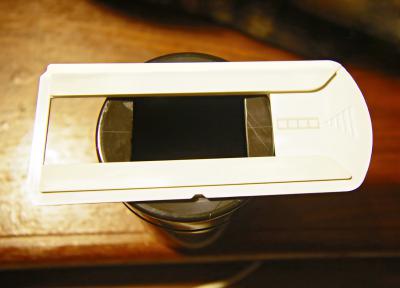
From the second glass cut a piece, so that he climbed on the first glass, and the other part on the lens. It is very good that the second glass was slightly smaller than the lens. Cut it along, i.e. lengthwise so that he can open the lens. Next, putting the first glass to the lens and putting on the second glass from above wrapped black tape so that the connection was tight.
Long thought how to attach a matte plate background. By the way, it was made from a cap from disposable noodles. Came up with some kind of loops and eats. But then he made it simpler and more efficient - he stuck a steel plate on the frame-sled, and a small magnetist stuck on the plate-background.
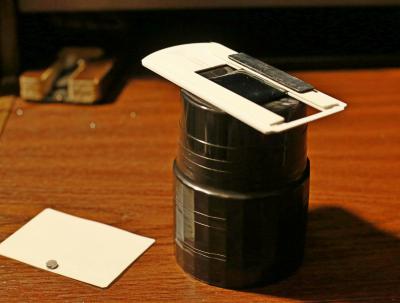
As it turned out, not only the film, but also the slides, right in the plastic frames, can be attacked, just need another magnet.
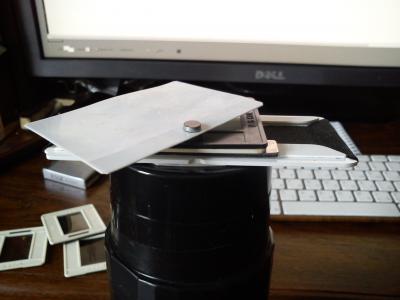
inside view so to speak
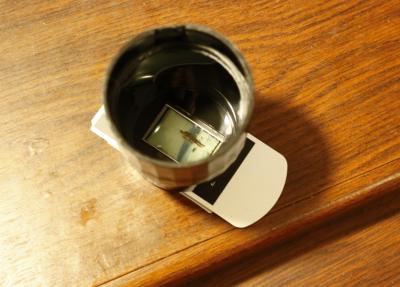
Assembly assembly (shot on mobile because the camera is one and it is in frame)

It turned out that when shooting, as a light source, it is best to use a monitor, especially if it is calibrated. The window with white fill is displayed on the whole screen, and on its background both BW negatives and color films and slides are copied. Color negatives are easy to “draw” in the viewer - FastStone
The quality of the shooting is quite high, it mainly depends on the quality of the digital camera and lens. To assess the show a few pictures.
Unfortunately, it turned out that many of my films were lost. I naively thought that there would be more interesting material. I hoped for pictures of the “old” Moscow, but alas, there were almost no such people, and I didn’t have to take pictures of my personal photos of my acquaintances and friends, so I’m only showing my photos with examples.
Here I am, in Soviet times, on the beach in Gantiadi (Abkhazia). In the frame there is a tape recorder - this is electronics 302. I made her a mod, as it were - sawed off half, lengthened a little so that the batteries would climb, replace the board and the speaker with their own, made auto-stop.

This picture is me too. It is interesting because what a good quality Zenith gave with a standard lens, it was not realistic to just pull out the quality when printing at home on a simple enlarger.

Well, for a snack Soviet beach, it is clear that the positive film was heavily grainy

I was very pleased with the result; not a lot of films were saved.
Source: https://habr.com/ru/post/201264/
All Articles